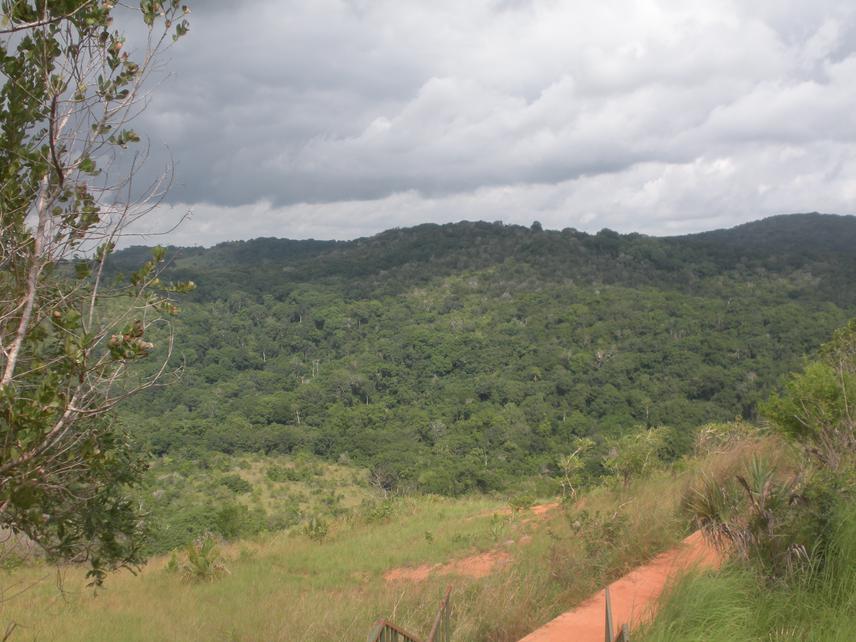Thomas Nyaranga Odeyo
This project focuses on conserving two endangered species within the Shimba Hills National Reserve: The Usambara Flap-nosed Chameleon (Kinyongia tenuis) and the Banded Shovel-snout Snake (Prosymna semifasciata). The Shimba Hills National Reserve is a critical habitat for both of these species, and this research will help inform conservation efforts to protect them. It provides niches and diverse habitats to many different species, including rare and unique reptiles. Both of these species are experiencing a continuing decline in area, extent, and quality of habitat, as well as population according to IUCN Red List assessment. Besides, the reserve is an integral part of the East African coastal rainforest biodiversity hotspot, and its conservation importance cannot be overstated.

Image of Shimba Hills forest showing the forest and grassland habitat. © Beryl Bwong.
The Usambara Flap-nosed Chameleon is categorized as a forest species, although it can be found in fragmented forest patches. Despite being a rare species with limited information, it is crucial to develop targeted conservation strategies. On the other hand, the Banded Shovel-snout Snake, limited to lowland coastal forests, is nocturnal and faces habitat threats from agricultural expansion and fires.
There is currently little known about the two species in their distribution, abundance and population size. Yet, unintentional effects of agricultural chemicals and activities by small-scale farmers pose challenges to the Usambara Flap-nosed Chameleon. At the same time, the Banded Shovel-snout Snake is affected by increased fires from agricultural expansion. Both species suffer from ecosystem degradation, emphasizing the need for conservation initiatives. Therefore, the project aims to address the limited information on the Usambara Flap-nosed Chameleon by conducting surveys on their distribution. In addition, the project will collect data on the current distribution, habitat usage, and land cover, including vegetation types (indigenous or exotic), and seek to understand the ecological context of the species.
Another area the project will address is raising awareness about the presence of these endangered species and the importance of conserving them. Here, it seeks to engage in public education to foster an understanding of the species' life history, linking it to conservation efforts.
Ultimately, the project approach aims to build support for conservation efforts and address the challenges these endangered species face. In addition, the project will contribute significantly to the conservation and sustainable management of the Usambara Flap-nosed Chameleon and the Banded Shovel-snout Snake in the Shimba Hills National Reserve.